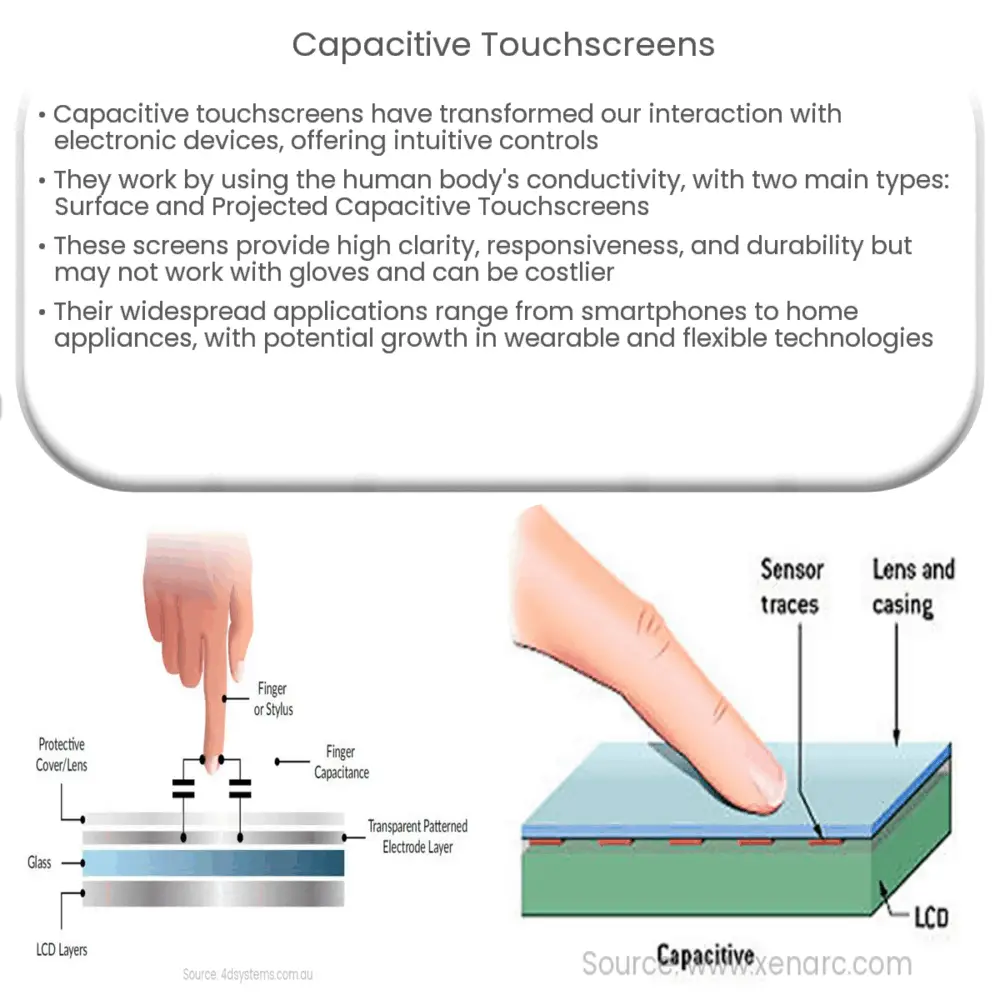Explore the world of capacitive touchscreens: how they work, their types, pros & cons, applications, and their promising future.

Introduction to Capacitive Touchscreens
Capacitive touchscreens are a significant advancement in modern technology that have revolutionized the way we interact with electronic devices. They are an integral part of devices like smartphones, tablets, and many others, providing a seamless user experience with intuitive controls.
How Capacitive Touchscreens Work
A capacitive touchscreen operates through a simple but fascinating principle. It relies on the human body’s natural conductivity to register touch input. The screen is coated with a material that stores electrical charges. When you touch the screen with your finger, it disturbs the screen’s electrostatic field, which is then detected and translated into specific actions or commands by the device’s processor.
Types of Capacitive Touchscreens
- Surface Capacitive Touchscreens: These screens employ sensors at the corners and a thin evenly distributed film across the screen to detect touch. When a user touches the screen, a small amount of charge is drawn to the point of contact, altering the electrostatic field.
- Projected Capacitive Touchscreens (PCT): PCT screens can register multiple touches simultaneously. They consist of a grid of rows and columns with a separate chip connected to each row and column, enabling it to register multiple touch points simultaneously.
Advantages of Capacitive Touchscreens
Capacitive touchscreens provide several significant advantages over other types of touchscreen technology. First, they offer high clarity, allowing for better visibility of the screen’s contents. They are also highly responsive and can register multiple touch points simultaneously, which is crucial for actions like zooming in or out on a picture or map. Lastly, these screens are durable and resistive to everyday elements like dust and water.
Disadvantages of Capacitive Touchscreens
Despite their advantages, capacitive touchscreens are not without their limitations. For one, they generally do not work with gloves because the screen cannot sense the electrical charge from the user’s finger. Furthermore, these screens can be more expensive to produce than other types of touchscreens, making devices that employ this technology more costly.
Applications of Capacitive Touchscreens
Capacitive touchscreens are used in a wide array of applications, thanks to their user-friendly interface and high responsiveness. Common applications include:
- Smartphones and Tablets: Nearly all modern smartphones and tablets use capacitive touchscreens, which allows for multi-touch gestures like pinching to zoom.
- ATMs and Kiosks: Many ATMs and interactive kiosks use capacitive touchscreens for their durability and clarity.
- Automotive Systems: Capacitive touchscreens are becoming more common in vehicle infotainment systems due to their high visibility and response time.
- Home Appliances: High-end appliances like ovens, washing machines, and refrigerators often have capacitive touchscreens for setting controls.
Future of Capacitive Touchscreens
The future of capacitive touchscreens is promising. With the advent of flexible screen technology, we could see capacitive touchscreens being integrated into wearable technology or other flexible devices. Moreover, advances in material science may solve the current limitations of capacitive touchscreens, like inability to work with gloves or the higher cost of production.
Conclusion
In conclusion, capacitive touchscreens have revolutionized our interaction with electronic devices, making the user experience intuitive and seamless. Despite some limitations, their advantages of high clarity, responsiveness, and durability have made them the go-to choice for many applications, including smartphones, tablets, ATMs, and more. As technology advances, we can expect to see even more innovative uses and improvements for capacitive touchscreens, further enhancing their role in our digital lives.

